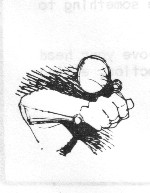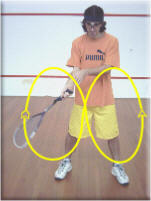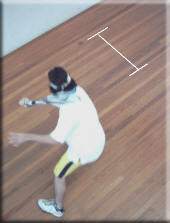Swing and Movement Exercises
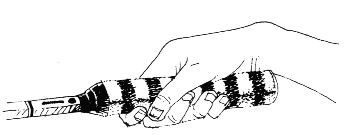
A limp wrist is a sign of incorrect technique (as shown in this graphic).
It is recommended skill development exercises be given to all beginners irrespective of age.
Grip, swing and movement exercises that are very specific to squash will train the muscles involved in playing the game.
Some new players have not got very strong wrists, arms and grip and these exercises will build up the strength to control these muscles, which in turn will help keep the racket head and wrist "up".
Squash is a very fast game and because of that it is essential to spend time without the squash ball concentrating on the grip, swing, and footwork. It is the sequence of the racket and arm movement, together with footwork that make fluent effortless strokes.
Forearm and Backhand rotationStand with the racket in front with the correct grip, firm wrist, and turn the racket from side to side. On the forehand side the rotation is referred to as pronation (as done during a side-arm throwing action). On the backhand side the rotation is referred to as supination (much the same as throwing a frisbee). |
Alternate forehand and backhand swings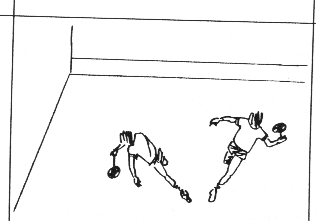 1.Stand with the back to the front wall, and travel down the court taking long strides, relaxed knees, swinging as though to hit an alternate forehand and backhand drive. |
Moving from various court positions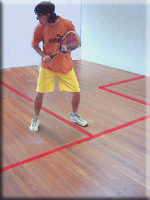 Standing at the T and with the racket in the "ready" position move to the back corner of the court, then through the T to the front corner and repeat several times, taking long strides. |
On the spot running and racket head control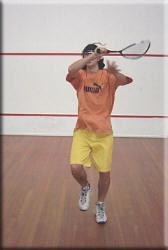 Stand with the racket in the correct grip, held in the "ready" position run on the spot, and control the racket head and wrist. More Pics...Run with your racket |
Racket and Ball control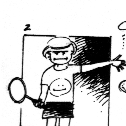 Throw the ball up. More Pics...Backhand wall patsForehand ball control Continually hit forehand pats |
Drive Footwork and MovementDrive ghosting will assist in the development of fluent racket work, swing, and court movement. These movements can be practiced at home every day in the back yard, park or under the house.
When you are reasonably happy with the movement, place 4/5 balls in various court areas, eg front corners, back corners, mid court, and using your racket, strive to move around having your racket in the "ready" position. |
Support Squashgame
Support us here at Squashgame.info! If you think we helped you, please consider our Squash Shop when purchasing or make a small contribution.


